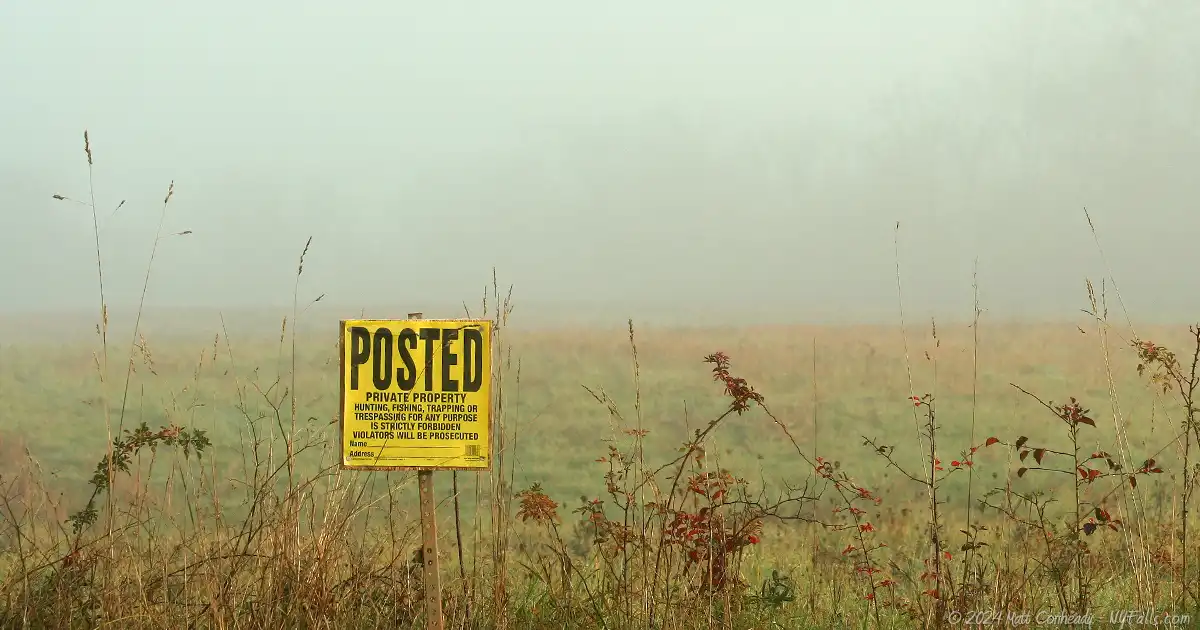A Hiker/Kayaker’s Guide to Trespassing in NY State

Many of the waterfalls you can visit are located on undeveloped, untamed land. Despite the fact that many waterfalls are peaceful and wonderful sites, exploring them can be dangerous. People have been hurt hiking to and climbing waterfalls. Some have even been killed. So even if you think nothing can happen, the environment is so unpredictable, the chance of something happening if you visit a lot of waterfalls is considerable. It’s important to use caution when hiking and climbing to ensure you’ll be safe and well enough to enjoy the falls once you reach it.
Note:
We in no way encourage readers to knowingly enter private property. Posting of information (written or imagery) obtained by knowingly trespassing may be removed at the website moderators’ discretion.
Before You Explore: Research
Seek out information about the ownership of land you are looking to enter and seek out permission for privately owned land. There are many ways to go about this.
- Public land does not give you the rights to do whatever you want within it. Know the rules and laws of the property before you visit.
- Know the difference between public land and accessible land. Some land is privately owned, but there are conditions for visitation. An example of this would be the State land surrounding Hemlock and Canadice Lakes (for which you need to follow certain rules) and some trails near Zoar Valley (for which you need to be a member of a local conservation organization).
- Check with the town or county clerk in the area in question. They should have detailed maps outlining privately owned land They should be able to give you the information you need.
- Ask the people who live there. Is there a house or business nearby?
- Make sure the person giving you permission is the actual owner. Don’t accept permission from a neighbor.
Some guidelines for Trespassing Law in NY State
- NY State trespass law is derived from English common law.
- A person, who enters private property without honestly knowing the status of the land, is not subject to criminal trespass.
- According to NY State Penal Law 140.05, to be convicted of trespass it must be proven that the person knew they were on private land (see law below). If you saw a posted sign, read on a website, or heard from someone that the land was not public, this can be held against you.
- Just because you are unaware of the status of the land, doesn’t make you immune to the law. An officer of the law can, and probably will, remove you from private land. If you come across any indication the land is private, you are obligated to remove yourself immediately.
- Just because you are unaware of the status of the land, doesn’t mean you can’t be charged and taken to court for trespassing. You may not get convicted, but it will still be a drain on your time and money.
- Theft or vandalism falls under another section of the law (Section 145) and can lead to felony charges if you enter private property and cause damage.
- You may not have the right to publish, sell, or promote photos taken while in the act trespassing. There is no law that specifically states this, but some lawyers can easily fit this under damages and you certainly can be sued civilly.
- There are exceptions to knowingly trespassing if you are traveling by navigable waterways (see below).
- It’s best to just avoid trespassing altogether. Ignorance is not immunity.

New York State Trespass Law
140.05: Trespass
A person is guilty of trespass when he knowingly enters or remains unlawfully in or upon premises. Trespass is a violation.
Simple trespass is a violation of the law, but not necessarily a criminal charge.
Criminal trespass in the third degree is a class B misdemeanor.
Water Navigation is Different

Guidelines for Water Navigation and Property
Tips for Paddlers
Sources
NY State Penal Code, NY State Court of Appeals, NY State DEC website, Lawyer consultation.
Disclaimer: I am not a lawyer. Seek professional legal council prior to making potential criminal choices.




